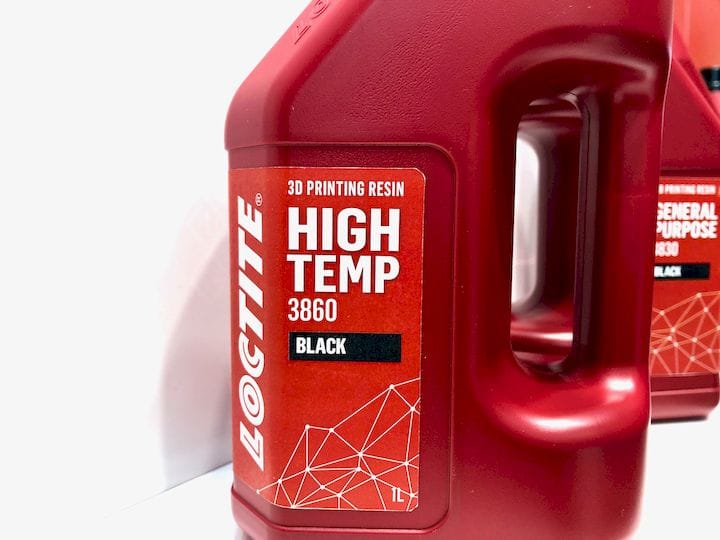![One of several new 3D printer resins carrying the Loctite brand [Source: Fabbaloo]](https://fabbaloo.com/wp-content/uploads/2020/05/image-asset_img_5eb0a192a746d.jpg)
Call us surprised: Loctite is entering the world of 3D printing.
The familiar brand is best known for its line of adhesive products, typically used for ensuring nuts and bolts remain tight, hence the main product name.
The company began in 1953 in the USA as American Sealants, but due to the popularity of their main product, changed the name of the company to “Loctite”. But in 1997 the brand was acquired by Germany-based Henkel, who continue to operate it in much the same way.
To date, the only reason a 3D printer operator would make use of Loctite products would be to keep the machine’s bolts from falling out. That would be the understanding of almost everyone.
But now things have changed, as the company has entered the 3D printer market with a series of 3D printing resins for SLA-style equipment. How did this unusual corporate maneuver come to pass?
It turns out that the science of adhesives is in fact a subset of polymer chemistry, the same science that is used to produce many of today’s amazing 3D printing materials. Thus Loctite already had a huge step into 3D print chemistry, having worked with silicones and acrylates, and it was simply a matter of devising a set of products for the discipline.
They say, “It’s just chemistry!” and they’re right.
But unlike some others entering the 3D printing resin market, Loctite has another advantage: size.
The company already has worldwide factories and sales distribution systems in place, and all of these can be leveraged to produce and sell 3D printing products.
To begin their exploration, the company has developed their own 3D printer, the Loctite EQ PR10 DLP Printer, cleaning chemicals and, of course, the resins. They have an entire ecosystem for 3D printing in place, although I suspect their main objective is to simply sell a lot of resin to third parties for use in their SLA-style 3D printing equipment.
![A selection of Loctite-branded 3D printer resins from Henkel [Source: Fabbaloo]](https://fabbaloo.com/wp-content/uploads/2020/05/image-asset_img_5eb0a1930d596.jpg)
Currently they’re offering a series of functional SLA resins, including: General Purpose, High Temperature, “Ultra Clear”, High Impact and Silicone. I suspect with their chemical expertise they may be able to produce a number of additional resin products with unusual properties as their experience in the space grows.
They are ready to work with any third party to assist in their use of Loctite resins by helping develop the necessary printing parameters for optimal results.
German giant Henkel is behind all of this activity, as they are intensely interested in the 3D print business, like an increasing number of other large corporations.
To me this is yet another vote “for” 3D printing by a large company; another signal the 3D printing for industry and professionals truly has a bright future.
Via Loctite / Henkel











An inventive designer has developed a method for producing 3D paper objects using recycled paper and 3D printed molds.